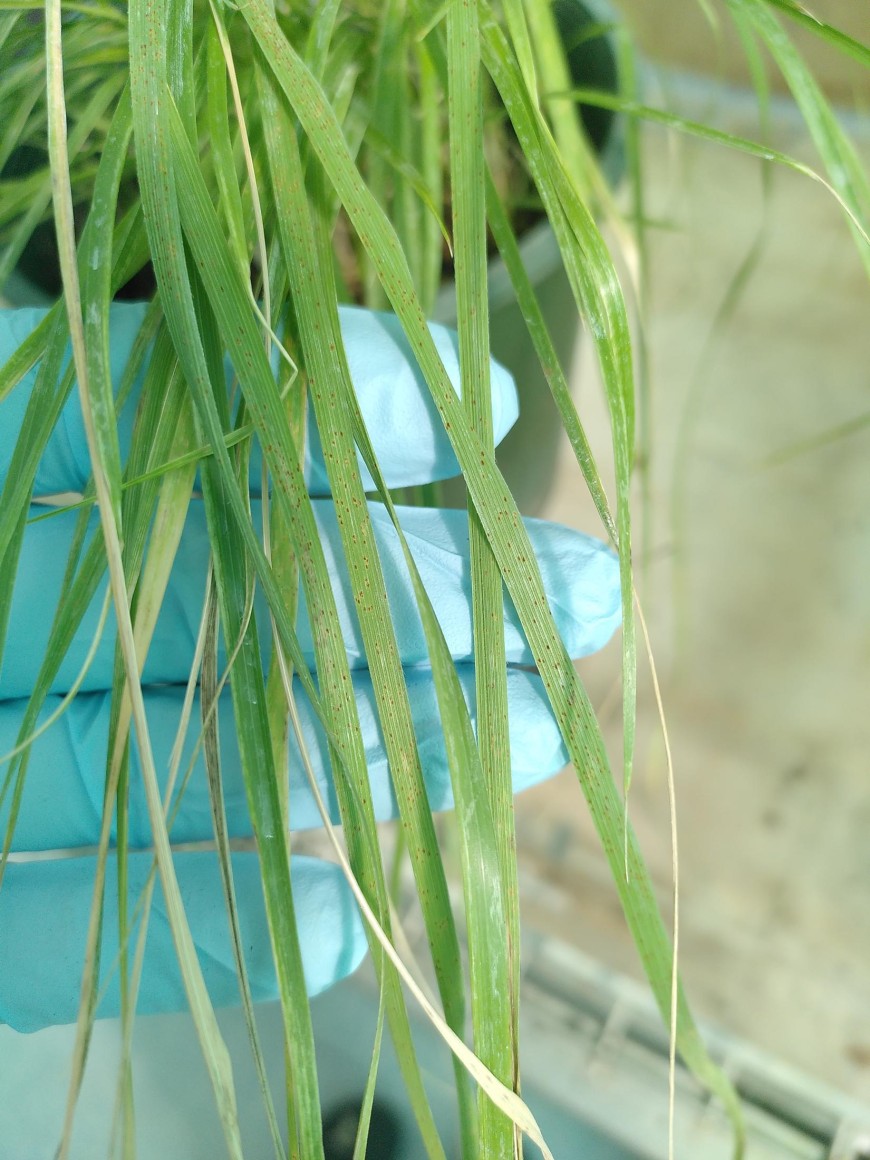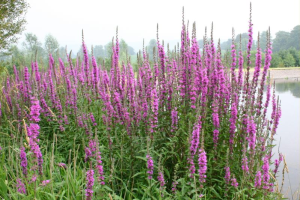Chilean needle grass rust
History in New Zealand
Chilean needle grass rust (Uromyces pencanus), a leaf pathogen native to South America, was approved for release in New Zealand by the Environmental Risk Management Authority (ERMA, now EPA) in 2011 to control Chilean needle grass (CNG). After a decade long wait to obtain an export permit from Argentina, the rust was finally imported into New Zealand in December 2022. During the wait, new host range test results revealed that the rust could infect Austrostipa species (spear grasses) native to Australia, a genus closely related to Nassella (needle grasses, including CNG, Nassella neesiana). This prompted testing of native grasses in New Zealand within the same tribe as Nassella (the Stipeae). After successful completion of these additional tests, EPA once again approved the release of the Chilean needle grass rust in July 2024. The first releases were made in spring 2024.
How would I find/recognise it and what is its lifecycle?
Pustules with cinnamon-brown urediniospores appear 4 to 5 weeks after a successful infection. These pustules form on the upper leaf surface, typically between the prominent veins in the intercostal areas. Surrounding the pustules, yellow chlorotic spots can be visible on both sides of the leaves. In its native range, pustule formation peaks during the wet periods of spring and autumn, with blackish-brown teliospores developing by the end of spring.
All available evidence suggests that the CNG rust has a shortened life cycle on a single host, cycling exclusively in the urediniospore form on CNG, and that teliospores have lost their ability to germinate.

Image: Chilean needle grass rust symptoms.
How does it damage Chilean needle grass?
Rust pustules damage the epidermis of CNG leaves. This causes increased water-loss, and infected leaves die prematurely. It is believed that this water-loss renders the rust particularly damaging under dry conditions.
Will it attack other plants?
No. CNG rust can only infect CNG (Nasella neesiana) in New Zealand. There are about 70 Nasella species in Argentina, only five are known to host this rust. New Zealand has no native Nasella species. In fact, the rust strain released in New Zealand can infect only two of the three populations present in New Zealand, i.e. the Marlborough and Canterbury populations of CNG are susceptible whereas the Hawkes Bay populations are resistant.
How effective is it?
It is too early to know how effective CNG rust will be in New Zealand. Field observations in Argentina have shown that the rust causes severe infection and foliage death, especially under hot, dry conditions. Infected plants showed greatly reduced seed production compared to healthy plants at the same sites.
How can I get the most out of it?
CNG rust spores germinate best between 15 and 25°C (optimal 18-20°C) and require at least 8 hours of moisture. The best time of year to release the rust is in autumn or spring. Ideally, applications should be timed for late afternoon when rain is expected or when dew forms overnight. Infected plants should be sprayed with water to stimulate spore germination. If no rain is expected, covering plants overnight with plastic bags pinned to the ground can help maintain a moist environment. Once established at a site, the rust should reproduce relatively quickly and disperse by wind.
How do I select a release site?
Read Guidelines for selecting release sites for biocontrol agents.
Since CNG rust needs some moisture for initial infection, a sheltered site from wind is beneficial. Plants should be well established and healthy. After infection, the site should be left undisturbed, with no grazing or spraying.
How do I collect it for release at other sites?
Collect the cinnamon brown spores into a small container using a fine paintbrush. Mix the spores with some talc powder, then brush the spore mixture on the upper side of big, healthy leaves of new plants, and spray with water.
How do I manage the release sites?
Avoid any activities that will interfere with the rust, such as grazing by stock or herbicide application. If you need to undertake control measures, then avoid that site.





